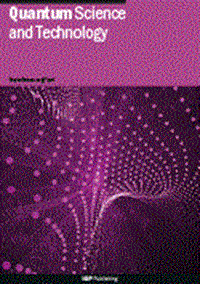使用稀土离子的量子网络
IF 5
2区 物理与天体物理
Q1 PHYSICS, MULTIDISCIPLINARY
引用次数: 0
摘要
我们回顾了有关为基于稀土离子掺杂晶体的未来量子网络创建光物质界面的概念和最近的工作。更准确地说,我们探索了它们在创建光子源、光的光量子存储器和允许量子信息处理的量子比特方面的独特适用性。此外,我们回顾了基本量子中继器链路的研究进展,并对未来的研究提出了建议。本文章由计算机程序翻译,如有差异,请以英文原文为准。
Quantum networks using rare-earth ions
We review concepts and recent work related to creating light–matter interfaces for future quantum networks based on rare-earth ion-doped crystals. More precisely, we explore their unique suitability for creating photon sources, optical quantum memories for light, and qubits that allow quantum information processing. In addition, we review the state-of-the-art of elementary quantum repeater links, and provide suggestions for future research.
求助全文
通过发布文献求助,成功后即可免费获取论文全文。
去求助
来源期刊

Quantum Science and Technology
Materials Science-Materials Science (miscellaneous)
CiteScore
11.20
自引率
3.00%
发文量
133
期刊介绍:
Driven by advances in technology and experimental capability, the last decade has seen the emergence of quantum technology: a new praxis for controlling the quantum world. It is now possible to engineer complex, multi-component systems that merge the once distinct fields of quantum optics and condensed matter physics.
Quantum Science and Technology is a new multidisciplinary, electronic-only journal, devoted to publishing research of the highest quality and impact covering theoretical and experimental advances in the fundamental science and application of all quantum-enabled technologies.
 求助内容:
求助内容: 应助结果提醒方式:
应助结果提醒方式:


